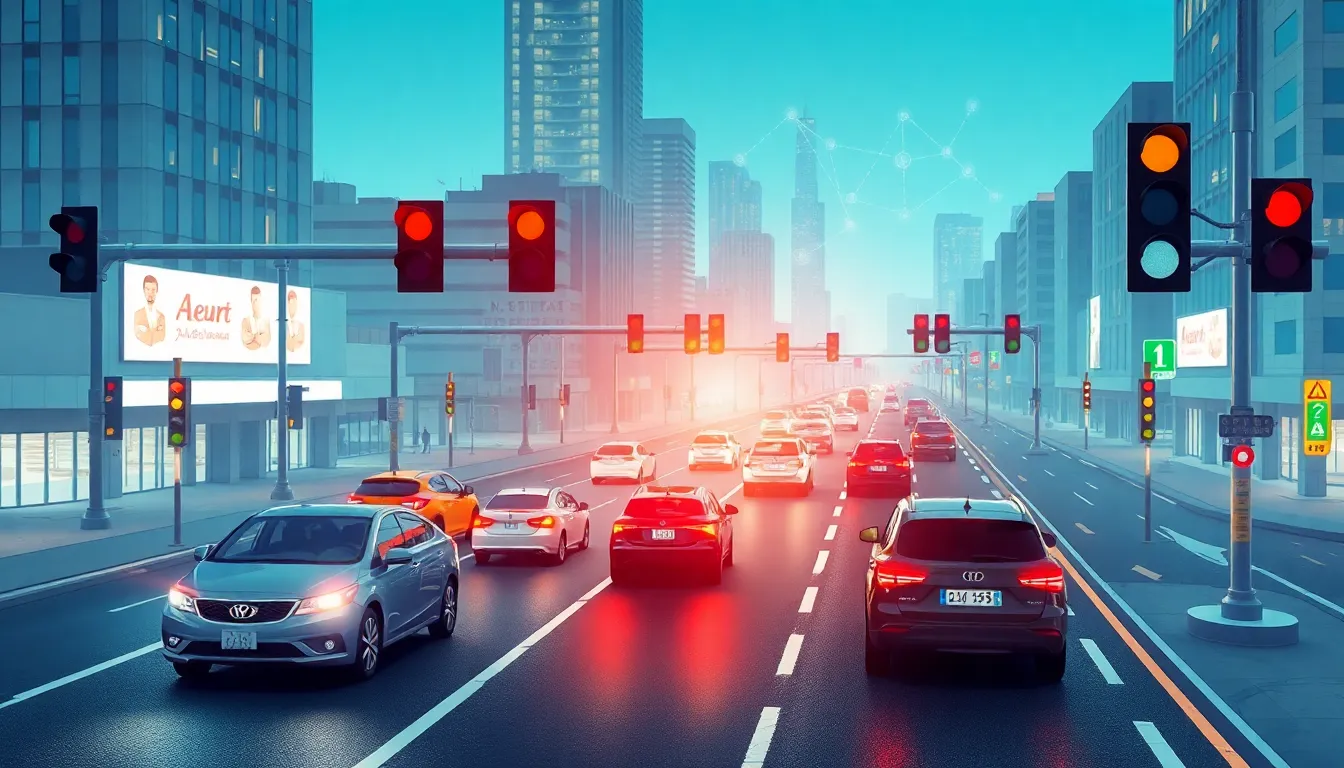Imagine a world where your car knows when you’re running late and orders your coffee while you’re stuck in traffic. Welcome to the future of transportation, where the Internet of Things (IoT) is revolutionizing how we move. From smart traffic lights to connected vehicles, this tech isn’t just about convenience; it’s about making travel safer and more efficient.
As cities grow and congestion becomes the norm, IoT transportation solutions are stepping in like a superhero in a traffic jam. They promise to reduce delays, cut emissions, and maybe even help you find that elusive parking spot. Buckle up and get ready to explore how these innovations are transforming our daily commutes into seamless journeys, all while keeping a smile on your face. Who knew getting around could be this fun?
Table of Contents
ToggleOverview of Internet of Things Transportation
The Internet of Things (IoT) transforms transportation systems globally. IoT technology integrates smart devices into vehicles and infrastructure. This integration enhances safety and efficiency on the roads. Smart traffic lights adapt to real-time conditions, reducing congestion and improving flow.
Connected vehicles collect vital data on performance and traffic patterns. They communicate with one another to prevent collisions and optimize route selections. Real-time updates from these vehicles assist drivers in avoiding congested areas. Businesses also benefit; companies use fleet management solutions to monitor vehicle locations, ensuring timely deliveries.
Data analytics plays a crucial role in IoT transportation. Analyzing traffic patterns helps city planners design better road systems. Additionally, insights from connected vehicles inform maintenance schedules. Predictive maintenance prevents breakdowns and reduces repair costs.
Innovations extend to public transportation. Smart buses equipped with GPS and IoT technology provide riders with accurate arrival times. Some cities implement smart parking solutions to streamline the parking experience. These systems guide drivers to available spots, significantly reducing the time spent searching.
Environmental benefits are noteworthy. IoT solutions contribute to lower emissions by reducing idle time and encouraging eco-friendly driving habits. Enhanced efficiency in public transport can decrease the number of vehicles on the road.
IoT transportation systems focus on user experience. Enhanced connectivity between vehicles, infrastructure, and users creates a seamless commuting experience. Ultimately, the impact of IoT on transportation enhances urban mobility and sustainability, paving the way for smarter cities.
Key Technologies in IoT Transportation

IoT transportation relies on several key technologies that enhance the effectiveness and efficiency of travel. Sensors and devices play a crucial role in gathering real-time information, while communication networks ensure seamless data transmission.
Sensors and Devices
Sensors and devices form the backbone of IoT transportation systems. Collecting data from vehicles and infrastructure, these components monitor various metrics, such as traffic flow and vehicle conditions. Smart sensors installed in roads detect congestion and adjust traffic signals accordingly. In vehicles, devices track location and performance, contributing to real-time navigation and safety features. Data collected by these sensors support predictive maintenance, reducing downtime and improving overall reliability. With accurate information, cities can manage transportation systems more effectively, leading to smoother, safer commutes.
Communication Networks
Communication networks enable efficient data exchange in IoT transportation. These networks connect sensors, devices, and control centers, facilitating instant communication. Technologies like 5G provide the low-latency, high-bandwidth connections essential for real-time data transmission. Vehicle-to-everything communication enables vehicles to share information with infrastructure and other vehicles, enhancing situational awareness and safety. Through robust connectivity, transportation systems can adapt to changing conditions and respond swiftly to incidents. Enhanced communication not only improves traffic management but also allows for more coordinated public transportation options, benefiting both commuters and city planners.
Benefits of Internet of Things Transportation
The Internet of Things (IoT) revolutionizes transportation by enhancing travel experiences through various innovations. Key benefits include improved efficiency and enhanced safety.
Improved Efficiency
Smart traffic lights respond to real-time data, allowing for smoother traffic flow. Connected vehicles share information about routes and conditions, enabling drivers to avoid congestion. Fleet management systems monitor vehicle locations, ensuring timely deliveries and reduced operational costs. Integrated platforms streamline public transportation, making navigation simpler for commuters. Analytics improve traffic patterns, allowing city planners to optimize infrastructure. Collectively, these advancements lead to reduced delays and enhanced overall efficiency in urban mobility.
Enhanced Safety
IoT technology significantly boosts road safety. Vehicles equipped with sensors detect potential collisions, alerting drivers to take preventive action. Smart traffic management systems adjust signals based on real-time conditions, reducing accident risks. Data collected from connected vehicles provides insights into accident hotspots, allowing authorities to address issues proactively. Fleet operators monitor driver behavior, promoting safer driving practices. As a result, these innovations contribute to lower accident rates and greater security for all road users.
Challenges in Implementing IoT in Transportation
Challenges exist in effectively integrating IoT solutions in transportation. Data privacy and security pose significant concerns for stakeholders.
Data Privacy and Security
IoT devices gather vast amounts of data, including sensitive user information. Breaches in security can lead to unauthorized access and misuse of this data. Implementing robust encryption methods is essential to protect personal information and ensure user trust. Additionally, regulatory compliance, such as adhering to GDPR guidelines, becomes crucial when managing data. Stakeholders must also prepare for evolving cyber threats, necessitating continuous updates in security protocols to mitigate vulnerabilities.
Integration with Existing Systems
Integrating IoT technology with existing transportation systems presents several hurdles. Legacy systems often lack compatibility with modern IoT solutions, leading to potential delays and increased costs during the transition. Collaboration among various stakeholders, including government agencies and private companies, is vital for achieving a unified approach. Furthermore, training personnel to adapt to new technologies is necessary to maximize the benefits of these integrations. Streamlining these operational processes enhances overall efficiency and promotes a smoother transition into a smart transportation ecosystem.
Future Trends in IoT Transportation
Emerging technologies will shape the landscape of IoT transportation. Autonomous vehicles showcase significant growth, utilizing advanced sensors and AI to navigate without human intervention. Smart infrastructure, including dynamic traffic management systems, adapts in real-time, facilitating smoother commutes and better road utilization.
Connected public transportation systems enhance passenger experiences through real-time monitoring of schedules and conditions. Such innovations contribute to increased ridership and improved service efficiency. Furthermore, vehicle-to-everything (V2X) communication allows vehicles to share information with infrastructure and pedestrians, substantially boosting road safety.
Electric vehicle integration plays a crucial role in future trends as charging stations leverage IoT technology for real-time availability updates. Data analytics aids in optimizing energy consumption, reducing operational costs for transportation agencies. Analytics tools also enable predictive maintenance in fleets, minimizing downtime and enhancing service reliability.
Sustainability continues to gain traction, pushing urban planning towards greener alternatives. Smart city initiatives prioritize reducing emissions through interconnected systems promoting eco-friendly transportation options. Cities enhance air quality while maintaining efficient transit operations through data-driven insights on traffic patterns.
Collaboration among stakeholders promotes seamless integrations of IoT solutions into existing transportation networks. Standardization efforts assist in overcoming compatibility issues, enabling systems to work harmoniously together. Enhanced security measures, focusing on data protection, reassures users while adequately addressing privacy concerns in connected environments.
As IoT technology evolves, its influence on transportation becomes more profound, leading to a future marked by increased efficiency, safety, and sustainability. Each trend highlights a commitment to enhancing urban mobility while creating a smarter, more connected world.
The Internet of Things is reshaping transportation in profound ways. By integrating smart technologies into vehicles and infrastructure, it’s enhancing safety and efficiency while reducing environmental impacts. As cities evolve into smarter urban landscapes, the collaboration among stakeholders will be crucial for overcoming challenges.
The future of transportation lies in the seamless integration of IoT solutions, enabling real-time data exchange and improved public transportation systems. With advancements in autonomous vehicles and smart infrastructure, commuters can look forward to safer and more efficient travel experiences. Embracing these innovations will not only elevate daily commutes but also contribute to a more sustainable future.



